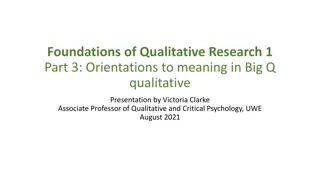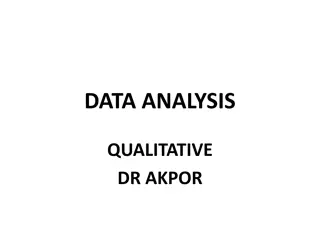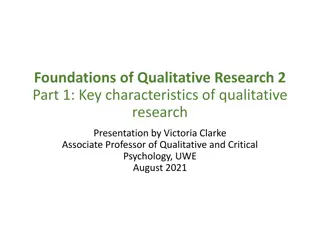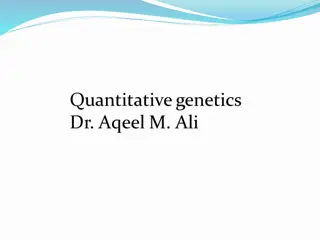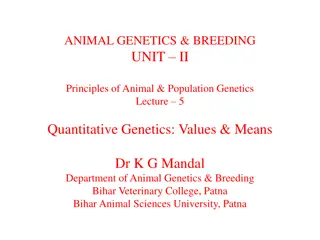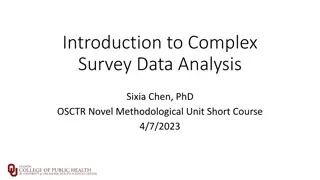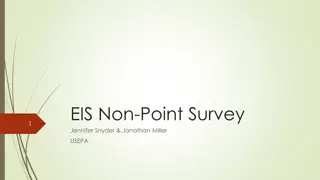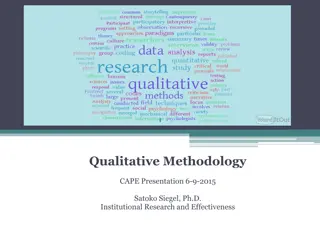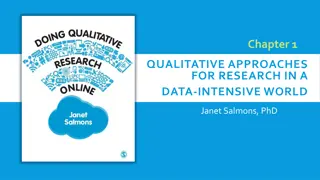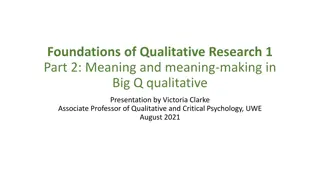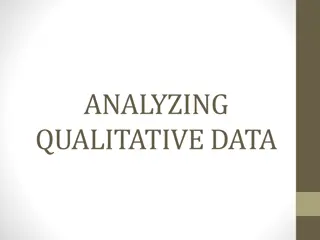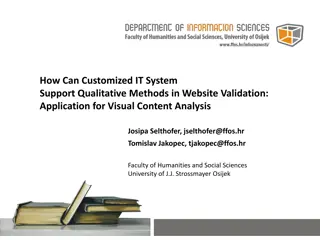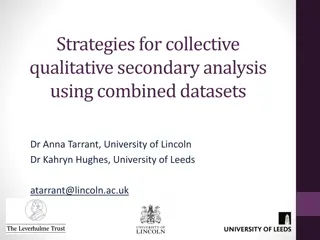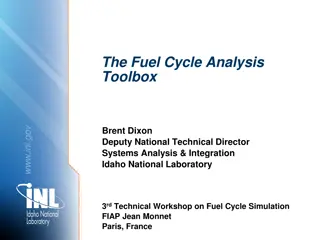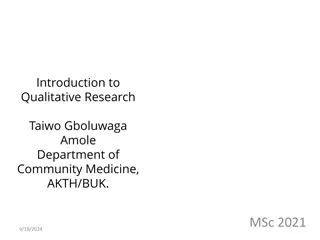Analyzing Qualitative Survey Data: Enhancing Analysis Tools
In the realm of institutional assessment and research at California State University, Monterey Bay, the analysis of open-ended survey questions often faces challenges in terms of scalability and resource allocation. To address this, goals for a tool have been outlined to attach variables, redact names, ensure security, integrate with authentication systems, categorize responses, and uncover common themes. Various tools have been evaluated, including NVivo, Excel VBA, Access database, custom web apps, and Text Analysis for Surveys in combination with R. A custom Qualitative Survey Reporting Tool (QSRT) has been developed on a LAMP stack, offering features like relational database design, OKTA integration, accessibility compliance, and a somewhat responsive design. The tool's data flow involves preprocessing data in R by extracting keys, filtering cases, attaching variables, handling missing data, and exporting to Excel files.
Download Presentation

Please find below an Image/Link to download the presentation.
The content on the website is provided AS IS for your information and personal use only. It may not be sold, licensed, or shared on other websites without obtaining consent from the author.If you encounter any issues during the download, it is possible that the publisher has removed the file from their server.
You are allowed to download the files provided on this website for personal or commercial use, subject to the condition that they are used lawfully. All files are the property of their respective owners.
The content on the website is provided AS IS for your information and personal use only. It may not be sold, licensed, or shared on other websites without obtaining consent from the author.
E N D
Presentation Transcript
Analyzing Qualitative Survey Data Institutional Assessment and Research California State University, Monterey Bay
Open-Ended Questions on Surveys Often open-ended questions are included on surveys but rarely receive the analysis and attention of quantitative items Most tools oriented towards qualitative data expect small numbers of interviews rather than thousands of cases and don t scale What worked for 150 NSSE responses in 2008 would not do for 3568 CSUMB Experience Survey responses in 2009 Like many departments, IAR could not dedicate the necessary human resources to qualitative analysis with manual processing
Goals for a tool Attach academic and demographic variables to open-text responses Redact names from the responses Allow users to read full text responses with appropriate security Integrate with campus authentication Categorize (tag) the responses and aggregate See common themes across instruments and administrations Data not locked into a particular tool
Tools evaluated NVivo in combination with an Excel VBA. Distribute Excel workbooks. Access database for processing. Distribute Excel workbooks. Custom, secured web app for display only. Initially, data still processed in Access Add offline processing with SPSS Text Analysis for Surveys in combination with R Add additional cleanup facilities (redaction, categorization) to an online tool
Qualitative Survey Reporting Tool (QSRT) Custom web app built on a LAMP stack (Linux, Apache, MySQL, PHP) Relational database design Integrated with OKTA for single sign on authentication Web app fully accessible (Section 508 compliant) Somewhat responsive design Browser agnostic
Data Preprocessing (R) Extract keys and open-ended questions from Campus Labs file Drop cases without qualitative responses Attach demographics and academic variables Set appropriate values for missing data Write extract to Excel file
SPSS Text Analytics for Surveys (TAS) Loads from Excel, SPSS Statistics or Data Collection file, or ODBC Assigns phrases to semantic concepts Facilitates development of mapping rules from concept to category Applies rules based on a customizable dictionary A whole response is tagged with a concept, and thus a category Displays case identifiers and attributes as needed Output to Excel, SPSS Statistics or Data Collection
Data Post-processing (R) Load SPSS TAS output Excel file Anonymize and assign key (CaseID). Add foreign keys. Split to two data frames: responses and categories With packages stringr and reshape2, explode the comma-delimited list of categories and reorganize the categories data frame from wide to long Insert into the QSRT staging table for redaction Insert metadata into setup tables
QSRT: Available data by the numbers 5 survey instruments NSSE, CSUMBES, HEDS Alumni, Alumni Grad, Alumni Ugrad 10 administrations (2008 - 2017) 10 demographic / academic variables 17,720 student / alumni responses 499 redactions (since we started logging this) 109 categories 34,193 category assignments 62 authorized users
QSRT: Ways of browsing the data QSRT Demo: IAR's Qualitative Survey Reporting Tool. Everything, paginated Filter by Survey, Administration, and Question Filter by Class Year Filter by Major Attach demographics Full text search Annotating and highlighting the survey responses
QSRT: Extensibility QSRT has a secured API to pull aggregates into any tool which supports MySQL over an SSH tunnel, such as Tableau Desktop or R. Example: Tag cloud created in R with the RMySQL, tm, and wordcloud packages Using open-source technologies prevents lock in. (At least the data can be moved)
Use of QSRT by Campus Leaders Academic Program Review Administrative reviews Curriculum change WASC and Graduation Initiative
Questions? Institutional Assessment and Research - https://csumb.edu/iar Veronica Chukwuemeka Director of Institutional Assessment and Research vchukwuemeka@csumb.edu Michael Dorsch Data and Visualization Analyst mdorsch@csumb.edu Sathyan Sundaram Research Analyst ssundaram@csumb.edu




